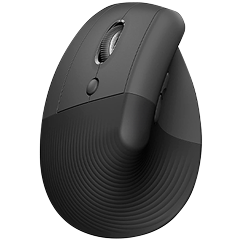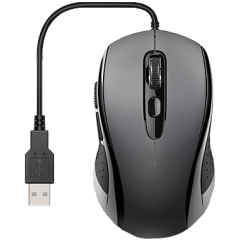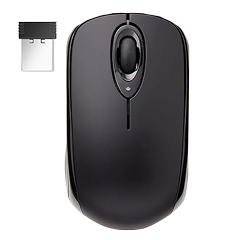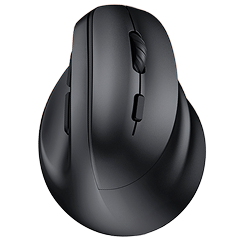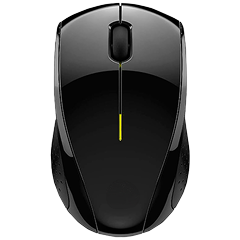Whether you’ve just built your dream battlestation or unboxed a beast of a gaming laptop, that basic OEM mouse just isn’t going to cut it when it comes time to jump into the game. All mice aren’t created equal and more than any other type, choosing the right gaming mouse can be a make or break decision.
While specialist gaming mice focused on a specific kind of game are great when you only play one genre, most of us jump between a range of games, and that’s where the best all-round gaming mice come in, designed to strike a balance between performance, comfort, and flexibility.
With so many brands and options available however, this isn’t an easy choice to make and it can be overwhelming knowing where to start. To help you along, I’ve pulled together this guide which covers everything you need to know about choosing the perfect all-round gaming mouse for your setup.
We’ll walk through the key specs that matter, explain which features are actually useful (and which aren’t), and ultimately help you figure out what to prioritise for your own style of play.
What Makes a Gaming Mouse, a Gaming Mouse?
Let’s start with the absolute basics, what is a gaming mouse and do you really need one?
Apart from a bit of flashy RGB lighting, at a glance, a gaming mouse likely won’t look that different from any other. It’s got the same general shape, still points and clicks, and probably connects via USB or a wireless dongle. All pretty familiar.
But dig a little deeper under that plastic shell and you’ll find a whole different beast because these mice are designed for speed, accuracy, and durability in ways that standard mice simply aren’t.
The key differences come down to responsiveness, precision and detail. Gaming mice pack high-performance sensors that track more accurately and consistently, even when you’re whipping the mouse across your desk in a last-second panic. They also offer much faster polling rates, meaning your inputs are sent to your PC more frequently, making everything feel snappier. And let’s not forget lower latency, an extra couple of milliseconds between pressing the button and the game reacting might not seem like much, but when you’re fighting for the win they can make all the difference.
Beyond raw performance, there’s flexibility. A good gaming mouse will let you tweak everything to your liking, from DPI sensitivity to button functions and some even have onboard memory to store specific profiles for different games.
What Specs to Look for in a Gaming Mouse
Let’s start with the most important but also most confusing details, those raw technical specifications. When it comes to mouse performance, sensor quality is everything and that’s defined by a few headline details. You’ll have a load of numbers thrown at you by brands on product pages and it can quickly get confusing to know which ones matter the most. Let’s break down the key specs and how we rank them for importance when testing gaming mice.
DPI
DPI, or dots per inch, is often considered the key sensitivity metric. It determines how far the cursor moves on screen relative to how much you move the mouse across your desk.
While some mice advertise sky-high DPI settings of 20,000 or more, that’s mostly for bragging rights and unlikely to be particularly useful as most gamers settle in the 800 to 1600 range. What really matters, and what we rank highly, is the ability to fine-tune a gaming mouse’s DPI setting with a good level of control.
A strong all-round gaming mouse should offer adjustable DPI in sensibly small increments with bonus points if you can switch it on the fly.
Remember that DPI is personal — what works best depends on your mousepad size, screen resolution, and playstyle. For FPS players, eDPI = DPI × in-game sensitivity is a better performance indicator.
Polling Rate
This measures how often the mouse reports its position to your PC, and you’ll usually see it displayed in hertz. A 1,000Hz polling rate (which means it updates every millisecond) is now standard in most gaming mice and offers more than enough responsiveness for the vast majority of users.
This is what we look for and should get the job done across games. You’ll see some high-end models go up to 2,000 or even as far as 8,000Hz, but these are edge-case numbers and won’t deliver a benefit for most gamers.
Tracking Speed
Measured in IPS (inches per second), the tracking speed metric tells you how fast you can move the mouse before it starts to lose accuracy. The higher the IPS, the better it can keep up with fast swipes without feeling jittery.
For general gaming, we look for anything above 300 IPS as worthy of praise with 500+ being the gold standard. Paired with a good G-force rating (the max acceleration the sensor can handle), this ensures your fast movements won’t result in erratic tracking or skipped inputs.
Acceleration
This is one of those more deep-cut specs that not everyone pays attention to and realistically, a good chunk of gamers would happily overlook without any real consequences. Acceleration plays a quiet but important role however, particularly in how a mouse feels during intense, fast-paced gaming.
Measured in Gs (as in gravitational force), the acceleration rating tells you how well a mouse can handle sudden bursts of motion, like quickly snapping your aim from one enemy to another or making a wild 180 when you hear footsteps behind you.
For general-purpose gaming, anything above 30G is enough, and you’ll rarely hit those limits unless you’re playing with very low sensitivity and making large, fast swipes.
Extra Buttons and Customization
A feature you’ll often see on gaming mice, much more than traditional options, is the addition of bonus programmable buttons. A few extra clickables can make a mouse more versatile, but there’s a fine line between functional and overkill if you don’t absolutely need them. Having some buttons is good, having too many extra buttons can actually make your experience worse so don’t always shoot for the largest number possible. For most general gamers, 2-5 programmable buttons across the mouse body is probably plenty.
These extra buttons are usually on the side of the mouse around where your thumb rests and are especially handy. Whether you’re throwing grenades, mapping push-to-talk, or assigning quick access to your inventory, they can enhance gameplay across games but also act as an ergonomic benefit too. It’s personal preference, but I’d recommend avoiding mice with a full number pad on the side unless you’re really into MMO style games. Those designs can actually be more awkward and uncomfortable to use, proving almost distracting outside of their niche.
A mouse’s supporting software can add a lot of value too and the quality of this will vary from brand to brand. You’ll turn to this for rebinding buttons, adjusting some of those sensor metrics we discussed earlier, and creating profiles for different games to quickly adjust a range of settings at once. Some brands do this better than others, with intuitive interfaces, cloud syncing and wider integrations or support for macros rather than simple binds, so it’s worth checking reviews for how smooth (or painful) the software experience is.
Shape and Ergonomics
No matter what games you play, ergonomics are king and comfort is queen. A mouse that causes hand fatigue or doesn’t suit your grip style will hold you back in every game and could even have long-term impacts on your health. It may sound simple, but before diving into sensor specs and app support, it’s worth figuring out what shape and size best suits you.
Grip style plays a big role here and that’s where you should start. If you use a palm grip (with the mouse deeply set in your hand and your fingers laid flat), you’ll want something slightly larger with a more supportive shape and pronounced hump.
Claw and fingertip grip users (with a lighter hold on the mouse and curled fingers) often prefer lower-profile, lighter mice that are easier to flick around. Hand size matters too; a mouse that’s too small or too bulky will cause strain during long sessions.
For general gaming, the major brands have largely figured out a strong neutral shape that works across the board. You’ll see this on gaming mice that don’t include other details in their name. If it doesn’t call out a specific genre or characteristic, chances are it’ll be pretty vanilla in shape and feel—not too aggressively sculpted or angled.
Make sure you check the weight of your mouse too. For most people, somewhere in the 70g to 100g range is usually a good compromise between agility and stability. Wireless mice will almost always be heavier thanks to their internal battery, as will palm grip options as there’s simply more of them. There are ultralight options though, some weight-conscious wired mice can be as little as 60g!
Wired vs Wireless: Which Is Better?
OK, this may not sound super helpful at first but the answer is neither, or both, basically there isn’t a clear winner.
For gaming in particular the wireless v wired debate used to be a no-brainer—wired mice were more responsive and more reliable, just what you needed in-game. Things are starting to change though and the gap has closed dramatically.
Today’s top wireless gaming mice rival their wired counterparts in areas like latency and accuracy, making them a legitimately interchangeable option for all but the top-level pro players. It all comes down to personal preference and use case, that’s why we don’t mark a mouse down for being wired and we don’t mark it up either.
Wireless mice have obvious advantages in terms of freedom and desk cleanliness. There’s no cable to drag or snag, which makes for a smoother overall experience and let’s face it—you’ve got enough cables to worry about in that setup already.
Battery life has also improved significantly, with many gaming mice lasting a week or more on a single charge and juicing up so quickly it’s almost a non-event. Some even support wireless charging via special mouse mats or include charging docks/stands. For a classic wireless gaming mouse we’d be looking for a minimum of 50 hours of playtime on a single charge to be considered good, though we’d reward that number being up into triple digits.
That said, wired mice still have an important place in the gaming landscape and are still the go-to in esports and the pro scene. It’s no longer a large gap, but wired gaming mice are still going to be able to offer the absolute pinnacle of responsiveness and reliability. No wireless signal means no chance for wireless interference after all.
They are generally still more affordable too, or at the very least will allocate more budget towards the sensor than wireless technology and batteries in entry-level and mid-range devices. Not having a battery also means not having to worry about charge levels or losing connection mid-game, a problem we’ve all faced at least once or twice in our gaming careers. They’re also going to be lighter on average, since a lot of that weight comes from the internal battery.
The Best Gaming Mouse Is the One That Adapts to You
Through all of the variances of one gaming mouse to another, one brand to the next, which is best is the one that works best for you and your needs—it’s not a universal truth. This is where flexibility, customization and adaptable features shine and are something we reward when testing.
If you’re the kind of gamer who plays a bit of everything, a good all-round gaming mouse is worth investing in but don’t feel like you need to push every line on the spec sheet to the limits. It doesn’t need to be the lightest, the flashiest, or boast the highest numbers in raw data—it needs to feel right in your hand, behave consistently with control at your level, and be ready to adapt to your habits.
Focus on comfort and shape first, then dial in your preferences for things like weight, sensor performance, and button layout. From there, it’s just about finding a model that balances those priorities within your budget.


